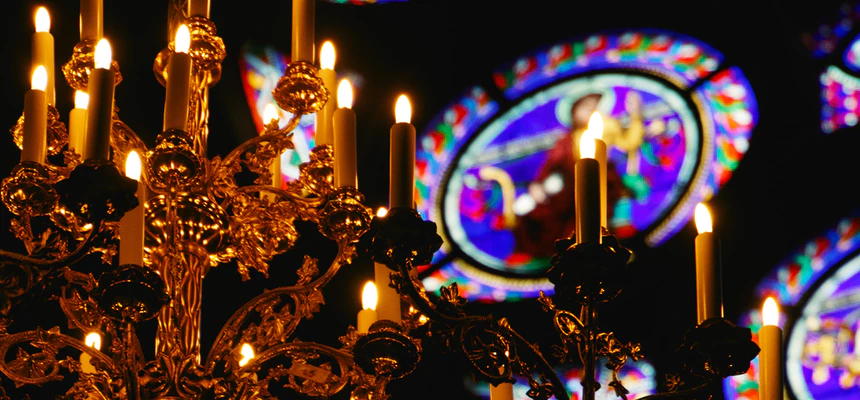
One of the most famous popes of the Middle Ages, Pope Gregory VII came from humble beginnings. Born between 1020 and 1025, Hildebrand Bonizi was born in Tuscany.
He went to Rome at an early age and studied at the palace school at the Lateran then at San Giovanni al Porta Latina. There, he met John Gratian, a teacher who became Pope Gregory VI. Gratian’s story is read elsewhere in this blog. He was accused of simony and deposed in 1046. Hildebrand, one of his acolytes, accompanied his teacher to exile in Cologne. After the death of the deposed Pope Gregory VI, Hildebrand finished his studies at Cologne’s cathedral school then served as a canon there. In short order, the young canon went to work for Bruno of Egisheim-Dagsburg, who was at the imperial court.
In 1049, Bruno was elected Pope and took the name Leo IX. As pope, he ordained the younger man a subdeacon and the rector of the Benedictine abbey of San Paolo Fuore le Mura. Hildebrand was not old enough to be ordained a priest (minimum of 30). All these moves encouraged Hildebrand’s ecclesiastic and political career.
Serving under successive popes, he became a papal representative to France (1054) and Milan (1057). He served at the court of Emperor Henry III in 1054/1055 and again in 1057/1058. He became quite close to Henry III, who died in 1056. After that, he served in the chancery and was a leading figure of the papal court. Hildebrand became quite popular in Rome. In 1059, he was ordained archdeacon of the Church. That same year, Hildebrand argued at the Lateran Council against private property for canons, a concept not well liked.
HILDEBRAND BECOMES POPE
After the death of Pope Alexander II, there was an immediate clamor for Hildebrand to become pope. The three-day mourning period established by Pope Nicholas II did not hold. Bishops and laypeople, alike, demanded his coronation immediately. Hildebrand went into hiding until the cardinals could vote him in. He was ordained a priest in May and consecrated a pope in June.
Establishing his role, the new pope believed that his role was to increase the power of the Church in people’s lives and in European politics. He believed that disobedience to the pope equaled heresy, which must be punished. Demanding an end to clerical marriages and simony, he saw himself as recreating the spiritual characteristics of the ancient Church. This earned him the ire of the higher prelates, who wanted the buying and selling of spiritual positions, and of the lower clergy, who wanted to be married. He supported peoples’ rebellions against disobedient bishops.
Pope Gregory furthered the alliances with the Normans, especially Robert Giuscard as far back as 1059. His agreements granted the Normans land, military and financial aid. In return, the Normans owed the papacy and all legitimate successors fealty. Gregory also gave the Normans rights to imperial and Byzantine-Muslim lands that they had conquered or would conquer. This became a very important point later.
Gregory, like Pope Alexander II before him, supported William the Conqueror. Since, as archdeacon, before his rise to the throne of Peter, Gregory had judicial and financial duties, he felt he could build up armed papal supporters, such as the Militia of St. Peter.
In addition to these negotiations and interests, Pope Gregory VII had an ongoing argument with the young Emperor Henry IV. It came to be known as the Investiture Controversy. Despite how close he had been with the deceased Henry III, the older man did not get along easily with the son. Hildebrand excommunicated five of Henry IV’s advisors, yet the emperor kept them with him. The major issue of the conflict was whether it should be the pope or the monarch who would name (invest) powerful local church officials such as bishops of cities and abbots of monasteries. During this long drawn and acrimonious struggle, Pope Gregory VII excommunicated Henry IV on three occasions and extended his support towards a rival claimant to the throne, Rudolf. In retaliation, Henry IV sought the pope’s dismissal and favored the election of an antipope, Clement II.
Ultimately, Henry IV was able to recover his throne. Gregory’s enemies became stronger. Eventually, Gregory went into exile to the castle of Salerno by the sea. The Pope died in Salerno on 25 May, 1085. He was buried in the cathedral there. After his death, he was mostly ignored for several centuries. In 1585, he was beatified by Pope Gregory XIII. In 1728, he was canonized by Pope Benedict XIII.

Recent Comments